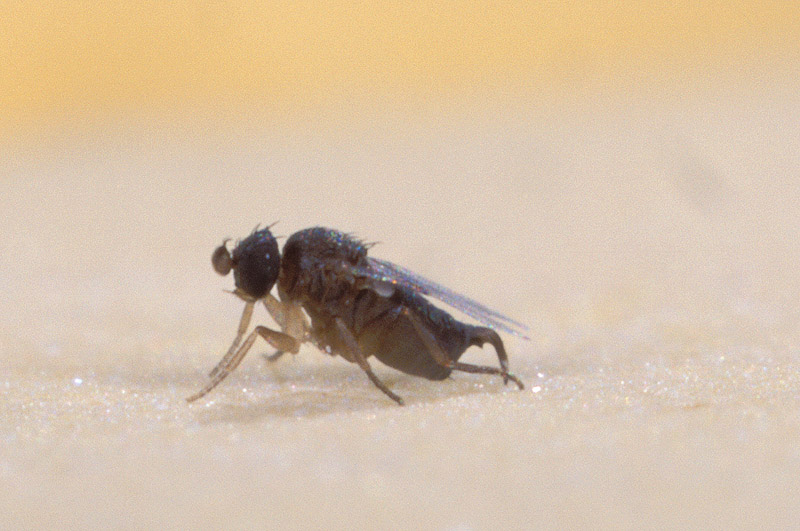Humpback/ Phorid Flies
Biology
The humpback fly is also known as the phorid fly. This fly gets it’s name due to it’s humpback feature. There are 2,500 species worldwide but there are only 226 species in North America. When viewed from the side, a pronounced hump in the body is seen. Their colors can range from black or brown to more yellowish.
The female fly lays from 1 – 100 eggs at a time in or on the larval food, which is usually insect nests, animal droppings, or dead snails. She can lay up to 750 eggs in her lifetime. The developmental time from egg to adult varies on the species, but the average is about 25 days. The average lifespan of this fly is 14 – 37 days.
Habitat
Humpback flies are common in homes and commercial facilities where food is prepared and served. In nature, they are normally around dead animals and decaying vegetation. In structures, they be may found breeding in drains, trash cans, dumpsters, recycling bins, grease traps, garbage disposals, crawlspaces, and any site where damp organic matter can accumulate for a period of time.
Threats
Humpback flies do have the potential to carry disease causing organisms. These flies thrive in filthy conditions and are a health concern when they occur in food facilities and hospitals. The humpback fly larvae have been found in the open wounds of patients.
Habits
The most easily recognized feature is the adult humpback fly running rapidly across surfaces instead of immediately flying when disrupted. Normally, flies instantly fly away. Adult flies are strong fliers, and have been known to fly as far as 6 miles in a 24 hour period. The reproductive potential of these flies is enormous. Infestations can occur in a short period of time.
Fly Prevention
The most important step is to find and eliminate all breeding locations. Our professionals are trained to inspect and locate all potential breeding sites.
Structural Pest Fly Program
Our service technician will perform a thorough inspection on the exterior and interior of your structure to locate all problem areas and properly identify the pest you are having.
All programs are specially designed to target the pest that is infesting your structure.

